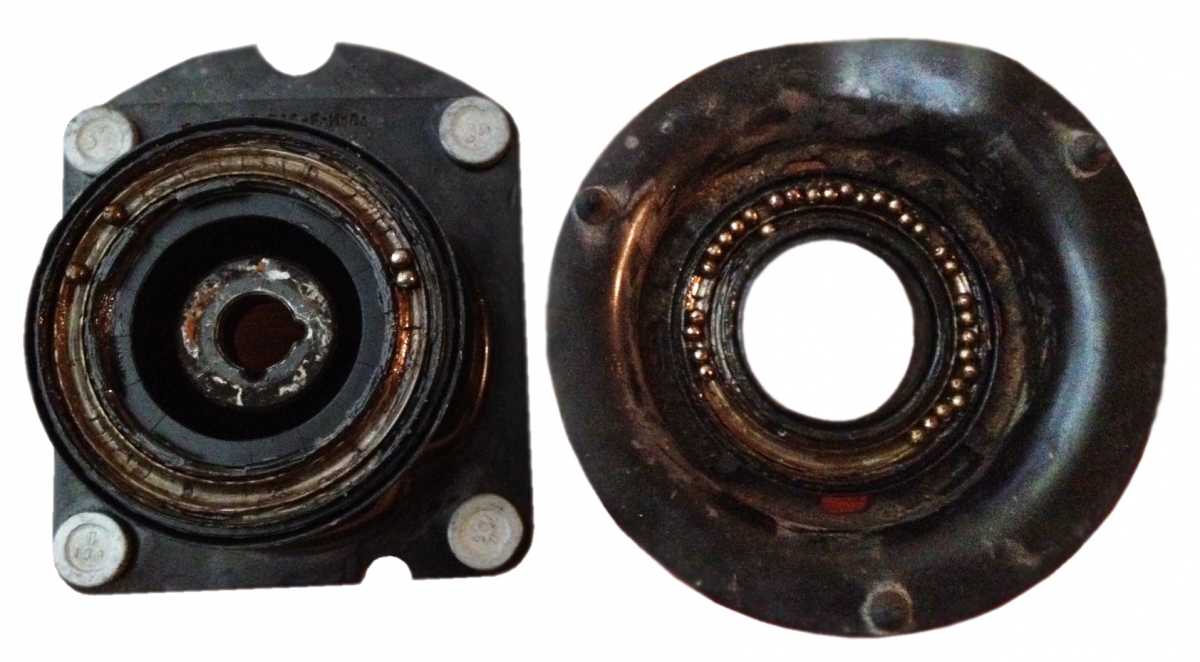A strut mount is the component that attaches your car’s suspension strut to the vehicle’s body. It acts as an insulator to absorb noise and vibration, while also providing a pivot point that allows the wheel to turn for steering.
This crucial part plays a dual role in both your suspension and steering systems. Understanding what it does and the symptoms of failure can help you catch problems early, ensuring a safe, quiet, and comfortable drive. Let’s dive into everything you need to know about this vital component.
What Is A Strut Mount?
While the shock absorber or strut gets most of the credit for a smooth ride, the mount that holds it in place is just as important. It’s the unsung hero of your suspension system.
A strut mount is a robust assembly made of rubber and metal that bolts to the top of a MacPherson strut. It contains a rubber insulator to absorb vibrations and a bearing that allows the entire strut assembly to rotate as you steer the car.
in my 25 years as an automotive parts manufacturer, I’ve seen how the quality of a strut mount can make a world of difference. The two key parts have very different jobs:
- The Rubber Insulator: Think of this as a heavy-duty cushion. Its job is to absorb the constant vibrations and impacts from the road, preventing them from being transferred into the car’s chassis. At Gjbush, we specialise in rubber compounds, and the quality of this rubber determines how quiet your ride is and how long the mount lasts.
- The Strut Bearing: This is a flat bearing (or plate) that sits inside the mount. It allows the entire strut to pivot smoothly and easily as you turn the steering wheel. If this bearing fails, your steering can become stiff or noisy.
What Are The Symptoms of A Bad Strut Mount?
Trying to diagnose a strange noise from your suspension can be frustrating. A failing strut mount has several distinct symptoms that can help you pinpoint it as the culprit.

The most common symptoms of a bad strut mount are clunking or popping sounds when driving over bumps, creaking or binding noises when steering at low speeds, vibration, and "memory steer," where the steering wheel is slow to return to centre.
A worn strut mount can no longer do its two jobs effectively. The failure of either the rubber part or the bearing part will produce different, but noticeable, symptoms.
- Clunking or Rattling Noises: This is the most frequent complaint. When the rubber insulator degrades and collapses, it creates a gap. The metal strut rod can then bang against the metal chassis when you go over bumps, creating a loud clunk.
- Creaking, Grinding, or Binding Sounds: If you hear a creaking, groaning, or "boing" sound when turning the steering wheel while parked or moving slowly, it’s a classic sign that the strut bearing has seized or worn out. The sound is the coil spring binding and then releasing as it fights the stiff bearing.
- Memory Steer: This is when your steering wheel doesn’t want to return to the straight-ahead position on its own after you make a turn. A binding strut bearing prevents the suspension from moving freely back to its neutral position.
- Vibrations and Poor Ride Quality: A collapsed mount can no longer absorb road vibrations, leading to a harsher ride and vibrations felt through the steering wheel. It can also affect wheel alignment, causing uneven tyre wear.
Can You Drive with A Broken Strut Mount?
If you hear that tell-tale clunking, it’s tempting to turn up the radio and hope it goes away. But is it safe to keep driving on a broken strut mount?
While your car will still technically drive with a broken strut mount, it is highly unsafe and not recommended. Continuing to drive will lead to poor handling, unpredictable steering, and will cause accelerated wear to your tyres and other suspension components.
Ignoring a bad strut mount is a bad idea for several reasons. What starts as an annoying noise can quickly escalate into a more dangerous and expensive problem.
- Reduced Vehicle Control: The mount is a key part of your suspension geometry. When it fails, your wheel alignment is affected, compromising steering response and stability. This is especially dangerous during an emergency manoeuvre or in wet conditions.
- Accelerated Tyre Wear: The poor alignment caused by a collapsed mount will cause the edges of your tyres to wear down very quickly, forcing you to replace them much sooner than expected.
- Damage to Other Components: The constant banging and vibration puts immense stress on the strut itself, as well as the ball joints and control arm bushings. This can cause a cascade of failures, turning a single repair into a full suspension overhaul.
- Catastrophic Failure: In extreme cases, a completely failed strut mount can allow the strut assembly to break free from the chassis. This would cause the suspension on that corner to collapse, leading to a complete and sudden loss of control over the vehicle.
Conclusion
The strut mount is a small but mighty component that is fundamental to your car’s safety, steering, and comfort. Ignoring the signs of failure can be dangerous and costly.